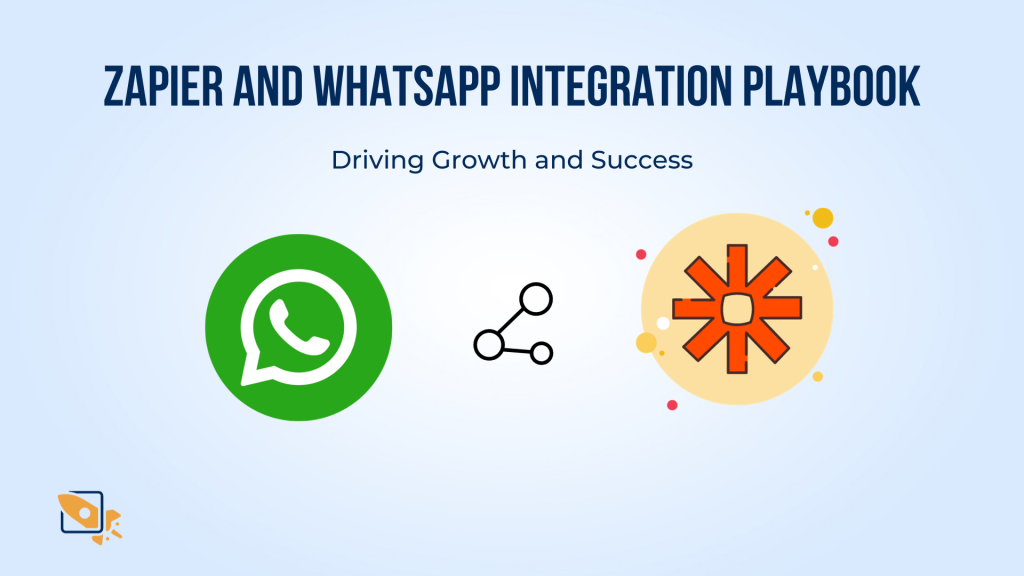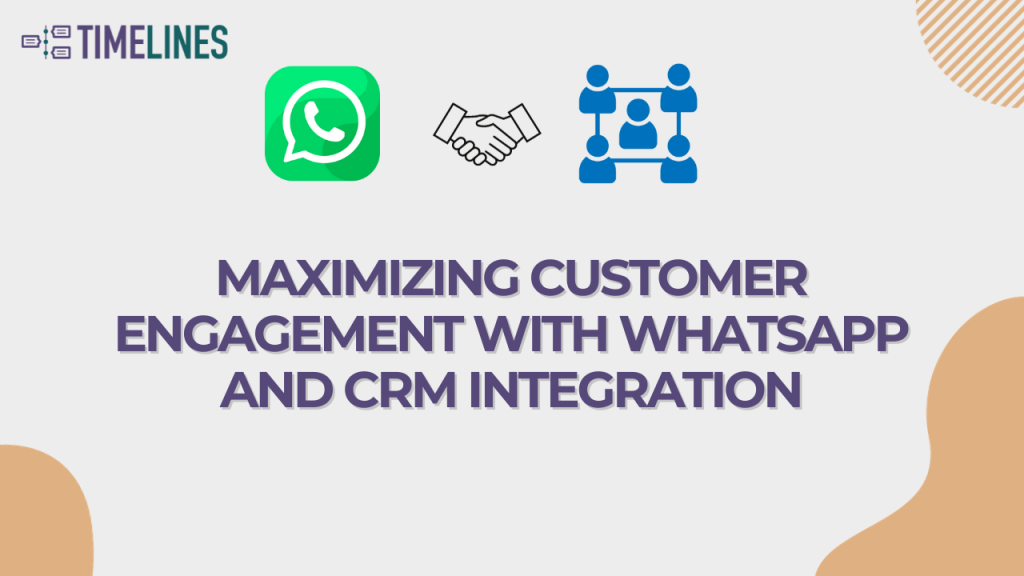Have you ever called a company and been stuck pressing buttons through endless menus? That’s a traditional IVR system, and it can be frustrating. However, there’s a new kind of IVR that’s making things much smoother: Conversational IVR.
What is Conversational IVR?
Conversational IVR, short for Interactive Voice Response, is a modern approach to handling phone calls. Unlike traditional IVRs that rely on pre-recorded menus and button presses, conversational IVR use artificial intelligence (AI) and natural language processing (NLP) to understand spoken language.
In simpler terms, you can talk freely to the system instead of struggling with menus and buttons. Conversational IVR can then analyze your request, figure out what you need, and either answers your question directly, complete a task, or connect you with the most suitable agent.
First, let’s talk about the technology that makes Conversational IVR so smart – Natural Language Processing.
Natural Language Processing (NLP) and its Application in Conversational IVR
NLP is the secret sauce that allows Conversational IVR to move beyond simple keyword recognition. Here’s how NLP is applied:
Intent Recognition: NLP can analyze a caller’s entire phrase or sentence to understand the underlying goal. This way, it figures out what you’re really trying to say. For example, if you say, “My internet isn’t working,” NLP understands you’re reporting a problem, not just mentioning the internet being down.
Entity Recognition: NLP can pinpoint specific details within a sentence. Back to the internet example, NLP would recognize “internet” as the thing you’re having trouble with and “not working” as the issue. This lets the conversational IVR gather specific information and respond accordingly.
Sentiment Analysis: NLP can even detect the emotion behind the caller’s words. This allows the Conversational IVR to adjust its communication style based on the situation. For instance, it might use a more empathetic tone if it detects frustration in the caller’s voice.
Now that you’re in the loop about NLP, are you curious about how Conversational IVR stacks up against the old-school Traditional IVR? Let’s find out.
What is the Difference Between Conversational IVR and Traditional IVR?
First, let’s understand what traditional IVR is.
Traditional IVR is an automated phone system that uses pre-recorded menus and button presses to guide callers through their options.
Traditional IVR systems can only understand specific button presses and operate within the pre-recorded options. There’s no room for natural language or complex requests.
While Traditional IVR can handle basic tasks efficiently, it’s not ideal for complex inquiries or situations where a natural conversation is needed. This is where Conversational IVR comes in, offering a more user-friendly and flexible approach.
Traditional IVR and conversational IVR differ significantly in how they interact with users. Here’s a breakdown of the key differences:
| Özellik | Traditional IVR | Conversational IVR |
| Interaction Method | Relies on button presses on a keypad. Users navigate pre-recorded menus with limited options. | Uses spoken language. Users interact naturally using speech recognition and Natural Language Processing (NLP). |
| User Experience | Feels impersonal | Natural, engaging conversation. |
| Flexibility | Limited flexibility. The system can only understand specific button presses and offers limited options within the pre-recorded menu. | Highly flexible. The system can understand variations in speech patterns and potentially handle complex sentences. |
| Verimlilik | Slower and less efficient. Following menus and navigating options can be time-consuming, especially for complex tasks. | Faster and more efficient. Users can directly tell the system their request, leading to quicker resolutions for simple tasks. |
| Error Handling | Limited (restart if a wrong button is pressed) | Clear error correction mechanisms (fix mistakes, rephrase requests) |
| Teknoloji | Pre-recorded menus, Auto-Attendants | NLP, Machine Learning, Conversational AI |
| Understanding User Requests | Limited to specific words/phrases | Natural Language Processing for understanding full sentences, multiple phrasings |
| Navigation | Nested submenus | No menus, conversation-based |
| Updating Responses | Complex (re-programming, re-recording) | Easier updates (no code required) |
| Suitability | Best suited for simple tasks, like checking a balance or making a payment if the option is clearly labelled. | Ideal for complex tasks and natural language inquiries. Users can ask questions in their own words, and the system will try to understand their intent. |
Additional Notes:
Traditional IVR systems often rely on pre-recorded messages, which can sound robotic and impersonal. Conversational IVR can use more natural-sounding voices and adapt responses based on the conversation.
Conversational IVR is still under development, and accuracy can vary depending on the system’s capabilities. However, advancements in NLP are continuously improving the user experience.
But how does Conversational IVR actually work? Keep reading, and you’ll see.
How Does Conversational IVR Work?
Conversational IVR uses clever technology to understand your voice instead of making you press buttons. Imagine you’re calling your bank. In the past, you might have heard, “Press 1 for checking your balance, 2 for savings.” Now, you can simply say, “Check my balance.”
Here’s how Conversational IVR works:
Step 1: Caller Identification
When you start a call, the conversational IVR system first identifies you. It may use your caller ID, details from previous interactions, or information you provide during the call to recognize who you are.
Step 2: Voice Recognition
Conversational IVR utilizes voice recognition technology to convert your spoken words into text. This technology excels at understanding various accents, speech patterns, and even informal language. You can speak naturally, just as you would to a friend or colleague.
Step 3: Natural Language Understanding (NLU)
This is where the system processes the text to figure out what you mean. NLU is a part of Natural Language Processing (NLP) that digs into the intent behind your words. Are you seeking account information, inquiring about a service, or perhaps looking to talk to a human representative? Conversational IVR uses NLU to decipher your intent and tailor its response accordingly.
Step 4: Managing the Conversation
The system employs conversation management to track the dialogue throughout your call. This allows the IVR to respond consistently and accurately to your inquiries or commands.
For instance, if you ask to reschedule an appointment, the system understands you’re referring to an existing event and utilizes conversation management to access the relevant calendar entries.
Step 5: Text-to-Speech (TTS) and Natural Language Generation (NLG)
Conversational IVR seamlessly integrates Text-to-Speech (TTS) technology and Natural Language Generation (NLG) to deliver a natural and engaging experience. TTS converts the system’s digital responses into spoken words, while NLG crafts the content of those responses.
By using TTS and NLG, conversational IVR eliminates the robotic feel associated with traditional IVR systems.
Step 6: Integration with Backend Systems
Conversational IVR can connect with backend systems like CRM or account management software. This allows the system to access real-time data and provide accurate information to callers. For instance, a caller could ask for their account balance, and the Conversational IVR could retrieve it directly from the system.
Step 7: Machine Learning
Conversational IVR is constantly learning and evolving through machine learning. As you interact with the system, it analyzes these interactions to refine its understanding of how people naturally phrase questions and requests. This ongoing process enhances the system’s accuracy and efficiency over time.
Step 8: Feedback Mechanism
After your interaction, you can often provide feedback, which helps the system learn and enhance its performance. This feedback loop is crucial for ongoing improvement, ensuring the system becomes even more helpful and responsive.
Now that we have a basic understanding of how it works, let’s see how Conversational IVR can help your business.
Benefits of Implementing Conversational IVR
Conversational IVR is a game-changer for customer service. Here’s how it helps you to create a frictionless experience for your customers while boosting your bottom line:
Effortless Problem-Solving
Forget the frustrating menu maze! Conversational IVR understands your questions naturally, just like talking to a friend. Need to check your order status or reset your password? Simply ask, and the system will guide you to the solution or connect you with the right agent.
Always-On Support
Conversational IVR doesn’t have office hours. It is there 24/7 to answer common questions, complete simple tasks like scheduling appointments, or direct you to helpful resources.
This means your customers get the support they need whenever they need it, whether it’s resetting a password at 2 am or checking on a flight status on a Sunday afternoon.
Reduced Costs
By automating routine tasks and answers, conversational IVR reduces the need for a large team of customer service agents. This translates into lower operational costs and can significantly decrease your total cost of ownership for customer service technologies.
Data-Driven Improvement
Conversational IVR doesn’t just answer questions; it gathers valuable insights. The system tracks customer inquiries, helping you identify trends and areas for improvement. This allows you to constantly refine your self-service options to better meet your customers’ evolving needs.
Happier Customers, Better Resolutions
Research shows conversational IVR can significantly improve first-call resolution (FCR) rates. In fact, studies have found that IVR self-service can resolve up to 74% of customer issues on the first call. This translates to happier customers who don’t have to wait on hold or repeat themselves to multiple agents.
Adapts to Your Growth
As your business expands, so can your conversational IVR. The system seamlessly scales to handle increased call volume, ensuring your customers continue to receive exceptional service without additional staffing investments.
Personalized Touch
Conversational IVR can personalize the interaction by addressing you by name or potentially referencing your account information. This can make the experience feel more positive and valued. A study by Forrester found that 63% of customers want personalized experiences from IVR systems.
Improved Agent Efficiency and Productivity
Conversational IVR takes the burden off agents by handling routine inquiries and tasks. This frees up agents to focus on more complex issues that require human empathy and critical thinking.
Conversational IVR can also equip agents with relevant customer information before a call is transferred, allowing for a smoother handover and faster resolution.
Now, let’s glance at some roadblocks to watch out for when setting up Conversational IVR.
Setting Up Conversational IVR: Hurdles to Consider
Conversational IVR offers a powerful tool to streamline customer interactions. But like any technology, it has its own set of challenges. Let’s explore some key roadblocks you might encounter when implementing Conversational IVR:
Understanding Every Word You Say: Even the best speech recognition systems can stumble sometimes. Background noise, mumbling, or strong accents can all lead to confusion. You’ll need to make sure the system is accurate enough to avoid frustrating misunderstandings with callers.
Catering to Different Voices: Not everyone speaks the same way. Conversational IVR needs to be flexible enough to handle different speaking styles and languages.
Think about someone from Boston compared to someone from Texas – their accents can be quite different! You’ll want the system to recognize these variations, or offer support in multiple languages to ensure everyone can interact smoothly.
Striking the Right Balance: Conversational IVR is great for automating routine tasks, but there will always be situations where a real person is needed. The key is finding the sweet spot. If the system becomes too complex or frustrating, callers might just give up and hang up.
Keeping Your Data Safe: Conversational IVR systems collect voice data, which raises privacy concerns. You’ll need strong security practices in place to make sure this data is protected and used responsibly. Be transparent with callers about how their data is used to build trust.
Keeping Up with the Lingo: Language is constantly evolving, and slang terms pop up all the time. Imagine a customer saying, “My internet is acting wonky.” Can the Conversational IVR understand this informal term for malfunctioning?
You’ll need to regularly update the system with new terms and phrases to ensure it stays up-to-date with everyday language.
By considering these challenges upfront, you can develop a Conversational IVR system that delivers a smooth and positive experience for your customers.
You consider the hurdles, brainstorm, and finally plan to set up your IVR. How about we go through some points that will help you design an effective Conversational IVR system?
Key Considerations for Effective Conversational IVRs
Here are some best practices to follow when designing a Conversational IVR system to ensure a positive customer experience:
Keep it Simple and Clear
- Use straightforward language that is easy for everyone to understand. Avoid technical jargon or overly complex sentence structures.
- Limit the number of prompts and options presented at once to avoid overwhelming users.
Focus on Natural Conversation
- Train the system to recognize natural speech patterns and respond in a conversational tone.
- Allow users to interrupt the system with questions or clarifications to maintain a natural flow of conversation.
Prioritize User Experience
- Design the system with the user in mind. Anticipate common questions and requests and ensure the system can handle them efficiently.
- Train the system to go beyond keywords and understand the intent behind a caller’s words.
Accuracy and Error Handling
- Implement clear error correction mechanisms to allow users to fix mistakes or rephrase their requests.
- Provide informative messages when the system doesn’t understand a request, offering alternative options or clarifying prompts.
Testing and Refinement
- Continuously test and refine the Conversational IVR system to ensure it performs optimally.
- Regularly update the system with new information and responses to keep it relevant and accurate.
By following these best practices, you can design a Conversational IVR system that enhances the customer experience, improves efficiency, and positions your company for success.
What are Some Popular Use Cases of Conversational IVR Systems?
Here are some popular use cases for conversational IVR systems:
Customer Service
Conversational IVR can handle a wide range of customer service inquiries, such as checking account balances, resetting passwords, or scheduling appointments. This frees up human agents to focus on more complex issues that require a personal touch.
Ödemeler
Conversational IVR can be used to make payments for bills, phone plans, or other services. This allows customers to make payments quickly and easily without waiting on hold for a live agent.
Order Tracking
Customers can use conversational IVR to track the status of their orders, reducing the need to call and check-in.
Randevu Planlama
It can be used to schedule appointments for doctor visits, maintenance calls, and service appointments.
Product Information
Conversational IVR can provide basic product information to customers, such as product specifications, availability, or pricing.
Lead Generation
Conversational IVR can be used to qualify leads and collect customer information for marketing campaigns.
Surveys and Feedback
Conversational IVR can be used to conduct short surveys or collect customer feedback after an interaction. This can provide valuable insights for businesses to improve their products and services.
Choosing the right solution is crucial. Here’s how to make sure you pick a winner.
Choosing the Right Conversational IVR Solution
Selecting the perfect conversational IVR solution for your business is crucial. Here’s a breakdown of key factors to consider:
Understanding Your Needs: First, identify your specific requirements. What problems are you trying to solve with an IVR? What functionalities are most important (e.g., appointment scheduling, payment processing)? Consider the volume and complexity of your typical calls to determine the level of AI and ML needed.
Scalability and Flexibility: Your business needs are likely to evolve. Choose an IVR platform that can grow with you. Look for a solution that allows you to easily add new features and functionalities as needed. Flexibility is also key. The platform should adapt to changing customer behavior and support future innovations.
Vendor Support Matters: Don’t underestimate the importance of robust vendor support. Choose a provider with a proven track record of excellent customer service. Ensure they offer comprehensive training materials and ongoing technical support to keep your IVR running smoothly.
Integration is Key: A seamless integration with your existing business systems (CRM, billing software) is essential. This ensures data flows smoothly, eliminating manual work and improving overall efficiency. Look for an IVR platform that offers pre-built connectors or open APIs (Application Programming Interfaces) to allow easy integration.
By carefully considering these factors, you’ll be well on your way to selecting a conversational IVR solution that helps your business to deliver exceptional customer service.
Sonuç
Conversational IVR is changing the way businesses handle customer interactions. By replacing the clunky button-mashing experience of traditional IVR with a natural, conversational interface, conversational IVR offers a smoother and more efficient experience for callers. This translates into happier customers, reduced costs, and improved overall customer service.
If you’re looking to streamline your customer interactions and provide a more positive experience for your callers, then conversational IVR is a powerful tool to consider. By carefully choosing a solution that meets your specific needs and following best practices for design and implementation, you can use conversational IVR to take your customer service to the next level.



![RingCentral Integration with WhatsApp: Step-By-Step Guide [2024] - TimelinesAI RingCentral Integration with WhatsApp: Step-By-Step Guide [2024]](https://150588669.v2.pressablecdn.com/wp-content/uploads/2024/05/1-300x169.png)

